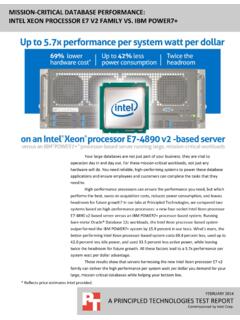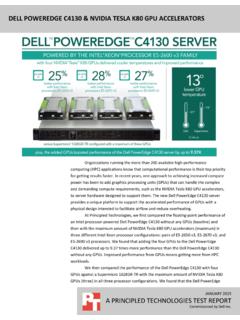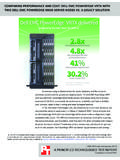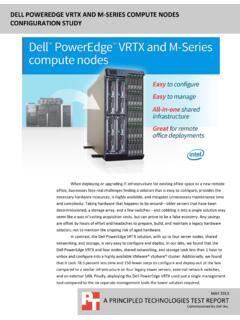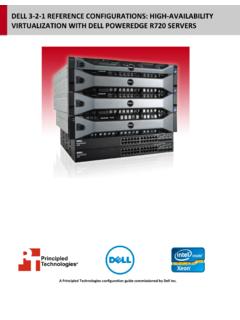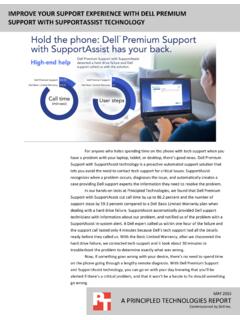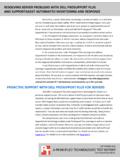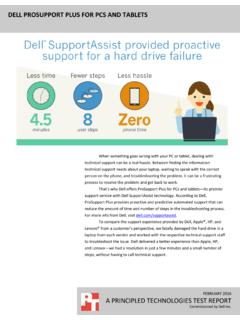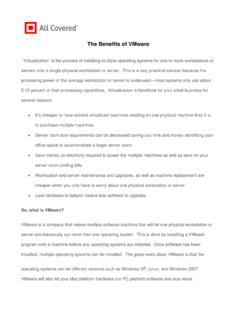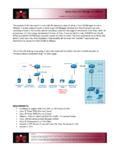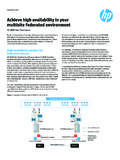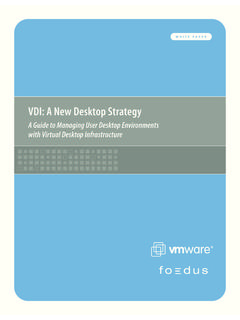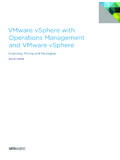Transcription of Cost and performance comparison for OpenStack …
1 MAY 2014 A PRINCIPLED TECHNOLOGIES TEST REPORT Commissioned by vmware Inc. COST AND performance comparison FOR OpenStack compute AND STORAGE INFRASTRUCTURE Hyper-converged architectures are emerging that can bring increased performance and significant cost reduction to virtualized infrastructures, where compute , network, and storage coexist closely on physical resources. Another trend shows cloud frameworks, such as OpenStack , are emerging and maturing to offer APIs for more efficient self-service provisioning and consumption of such resources. The combination of these industry trends and technology developments provides customers with many options when choosing the underlying virtualization technology for their cloud. Two key components of cloud infrastructure design factor into its performance the hypervisor itself and its underlying storage making the architecture of the storage a critical consideration for businesses.
2 Two main approaches to storage architectures are converged and non-converged. Non-converged storage exists on its own tier, separate from the compute infrastructure, and is typically shared storage either provided by traditional storage arrays or built from commodity server hardware running specialized software. Red Hat Storage Server uses this model by aggregating disks on multiple commodity server nodes and running a Red Hat version of GlusterFS. The converged storage model, which also presents shared storage to compute resources, collapses the storage and compute hardware tiers and leverages local disks in each compute node so that performance and capacity can be scaled out together. vmware Virtual SAN takes this converged approach, using disks in each compute node, while also presenting the aggregate storage pool to the vSphere cluster as a datastore.
3 A Principled Technologies test report 2 Cost and performance comparison for OpenStack compute and storage infrastructure In the Principled Technologies labs, we compared these two solutions in the context of an OpenStack environment: vmware vSphere and vmware Virtual SAN and Red Hat Enterprise Linux and the KVM hypervisor with Red Hat Storage Server, based on the Gluster distributed file system. We used two different approaches in our testing, both of which ran in the context of an OpenStack infrastructure. First, to test in a realistic cloud application, we used the Yahoo! Cloud Serving Benchmark (YCSB) with an Apache Cassandra distributed database. We chose Cassandra because of its popular distributed NoSQL database platform and because the results could provide data to support the cloud trends happening in the market today.
4 Next, to test the raw capabilities of the hardware and software without an application framework, we used the Flexible I/O (FIO) benchmark on a test file in each VM. We chose the FIO benchmark to test storage performance without the potential overhead caused by the application and database layers. We found that the vmware solution provided 53 percent more YCSB operations per second (OPS), as well as 159 percent more IOPS during a mixed read-write FIO workload than the Red Hat solution using the KVM hypervisor and Red Hat Storage Server. The vmware solution also had a 26 percent lower cost and used less physical space in the datacenter. HYPER-CONVERGENCE FOR CLOUD performance OpenStack as a cloud framework can enable many types of applications to be deployed on a large scale.
5 One such application is a NoSQL distributed database, such as Apache Cassandra. Underneath this distributed database must be a storage solution that can provide high performance under load while also scaling out to accommodate new nodes. Furthermore, commonplace IO-intensive actions, such as deploying instances, uploading images, and moving virtual machines, often create bottlenecks in OpenStack cloud environments, so strong resource management solutions are crucial. In the relatively new and fast-growing world of software-defined storage, how does a business using OpenStack balance performance and cost considerations? vmware Virtual SAN brings all the proven benefits of shared storage in a vmware environment, such as High Availability (HA) and vMotion, while using direct-attached disks on the compute hosts.
6 Using vmware Virtual SAN with vmware vSphere has several crucial characteristics that make it attractive for hyper-converged storage management: 1. vmware vSphere is a small-footprint hypervisor that requires less frequent patching than to a general-purpose OS hypervisor. 2. Native HA minimizes downtime in the event of a host outage. A Principled Technologies test report 3 Cost and performance comparison for OpenStack compute and storage infrastructure 3. vmware Distributed Resource Scheduler (DRS) uses vMotion to balance workloads to accommodate shifting demand and has the ability to patch infrastructure with zero downtime. 4. More advanced memory management technologies lead to potentially higher VM density. 5. vmware vSphere has broad and proven guest OS support.
7 vmware Virtual SAN integrates tightly with the hypervisor, and scales easily by adding more hosts to a cluster or more storage to existing hosts. In addition, vmware Virtual SAN can be managed directly through the familiar vCenter Server Web client console, alongside everything else in a vmware vSphere environment. In a vmware Virtual SAN-enabled host, every disk chosen for Virtual SAN storage belongs to a disk group. Each disk group has one solid-state drive (SSD) and up to seven hard drives (HDDs). The SSD in a disk group serves as a read and write cache, with writes acknowledged by the SSD and later de-staged to the HDDs. Storage policies allow administrators to control stripe width, failures-to-tolerate, and storage reservation percentage on a per-VM basis.
8 Additional storage or hosts add to the capacity and performance of a vmware Virtual SAN datastore without disruption. vmware Virtual SAN integrates advanced features of more expensive external storage into the hypervisor, retaining high performance characteristics and allowing for space and cost savings. OUR ENVIRONMENT In both the vmware and Red Hat environments, we used the same number of disk slots (12) per storage node for VM virtual disk storage. Our vmware Virtual SAN solution consisted of four Dell PowerEdge R720s, each running vmware vSphere Each server contained two disk groups, with one SSD and five HDDs in each disk group, to total 12 drive bays used per server. We installed the hypervisor onto internal dual SD cards and dedicated all the drive bays to Virtual SAN storage.
9 We managed the environment with a separate machine running vmware vCenter Server. We created an OpenStack environment using Ubuntu LTS and the Havana release of open source OpenStack . Finally, we connected the OpenStack environment to the vCenter Server to complete the setup. Red Hat recommends separate hardware for storage and compute , so our Red Hat Storage Server solution for testing OpenStack required twice as many servers for the non-converged architecture of KVM and Red Hat Storage Server. We set up the Red Hat recommended minimum of four Dell PowerEdge R720s running Red Hat Storage Server , and four Dell C8000 servers running Red Hat Enterprise Linux with KVM to serve as compute nodes. We used a pair of disks for the OS in the compute nodes, A Principled Technologies test report 4 Cost and performance comparison for OpenStack compute and storage infrastructure and we used 14 total drive bays in each server for Red Hat Storage Server 12 bays were used for data storage, and two bays were used for the OS.
10 Each Dell PowerEdge R720 contained 12 HDDs in a RAID6 configuration for data storage, plus two HDDs in RAID1 for the operating system (12 HDDs per node is the Red Hat recommendation for general-purpose use cases).1 We used no SSDs, as there is no native support for tiering using different drive types in Red Hat Storage Server. On separate hardware, we created a Red Hat OpenStack environment and connected it to the compute and storage nodes to complete the setup. Both environments used the Dell PERC H710P RAID controller. The Red Hat Storage requires hardware RAID6, RAID10, and a flash-backed or battery-backed cache. In contrast, Virtual SAN works in pass-through or RAID0 mode, which eliminates the need for advanced hardware RAID (we used RAID0 on the PERC H710P).
